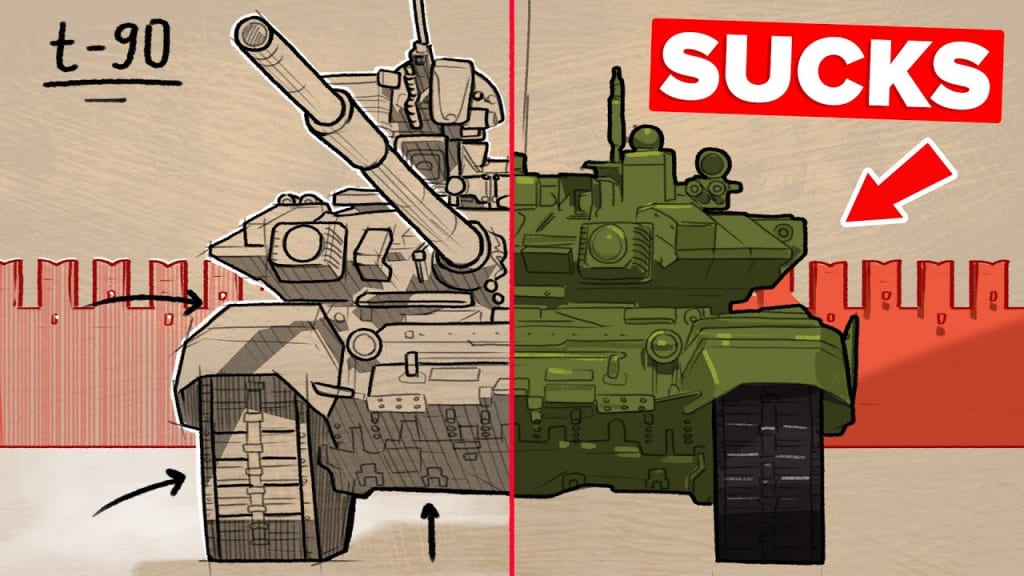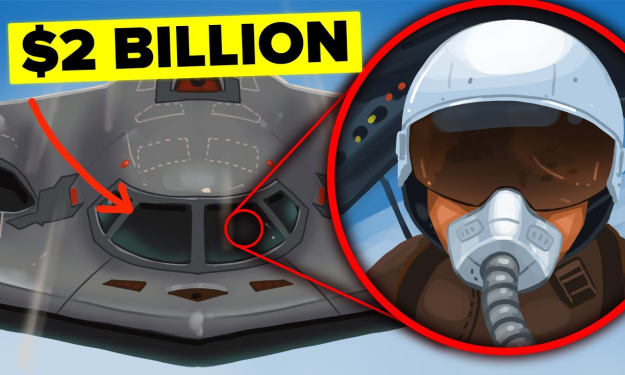Why does the Russian T-90 tank utterly fail?
When the war in Ukraine began, we observed a large number of Russian T-72s on the battlefield, but its contemporary T-90s were initially scarce. If the T-90 is Russia's greatest tank, why are they leading the fight with an older model? It turns out that it's because the T-90 isn't all that amazing, as explained in today's huge new narrative! ❕🛑🛑❕

When the war in Ukraine began, we observed a large number of Russian T-72s on the battlefield, but its contemporary T-90s were initially scarce. If the T-90 is Russia's greatest tank, why are they leading the fight with an older model? It turns out that it's because the T-90 isn't all that amazing, as explained in today's huge new narrative! ❕🛑🛑❕
Although the T-90 is currently Russia's best tank, it has shown itself to be hot garbage. Russian T-72s appeared on the battlefield in large numbers when the war in Ukraine first began, but oddly, their contemporary T-90s were initially infrequently seen. The T-90 isn't that great, but it's crucial for Russian arm exports since many nations around the world use variants of the T-90. The world wondered why Russia was leading the charge with an older model if the T-90 was their best tank. Countries currently using those vehicles will start to second-guess future purchases if one of their biggest breadwinners suddenly demonstrates that it cannot withstand even semi-modern threats. The Russian military has experienced this issue time and time again because their equipment does not perform as promised.
Already, nations like India, which are frequently significant customers of the Russian defense industry, are looking elsewhere for future purchases. The T-90's poor performance in Ukraine is only aggravating the situation because it shows that creating the tank in the first place was a grave error. There were inherent flaws with the T-90 from the beginning. To replace the entire Soviet Union's fleet of tanks, the tank was initially developed as part of a Soviet program. The Germans had the Leopard 2, the British had the formidable Challenger, and the Americans had retired their decades-old, subpar Abrams in favor of the formidable Abrams by the late 1980s. In order to combat this new threat, the Soviet Union needed a tank. It was not the T-90.
The T-90 shared the same fundamental design as the T-72 rather than taking a cue from the West, which started redesigning its main battle tanks from scratch. The Soviets were left with a tank that was designed using Cold War design principles rather than being a completely new tank but rather a significant upgrade. The T-90 was already several steps behind the West at the outset because they had fundamentally altered their designs in response to present and potential threats. However, the Soviets were merely acting in a Soviet manner. Instead of spending money on a strong, capable, and contemporary tank, they opted to follow the old Stalin maxim that "quantity is a quality all its own." When Stalin was in charge, this may have been the case, but in the era of attack helicopters, intelligent weapons, and computerized warfare, quality is suddenly extremely important.
The T-90 was made to be economical, or cheaper, so that the Soviets could use it in a large number of battles. The T-90 was the ideal weapon for an outmoded style of war fighting because it continued to follow the flood doctrine of World War II, in which Soviet tanks essentially outnumbered their superior German counterparts through sheer numbers. One benefit of making a cheap tank is that it is simple to maintain, and this was especially important to the Soviet army because it had three different tank models. T64s, T72s, and T80s all had many things in common but needed a lot of different parts, making them logistically impossible to use in a high-loss situation like a modern war. The T-90 was designed to ease the workload of overworked Soviet maintenance staff, which would benefit a military that is already terrible at logistics.
Tank production, which had already slowed to a crawl, eventually came to a complete halt as the Soviet Union disintegrated. The Lenin Kirov Manufacturing Plant had stopped producing tanks in 1990, and only two significant factories were still operating. The Malyshev Factory was now situated in an independent Ukraine. Moreover, a significant slowdown in production was caused by budgetary issues. Russia sent its tanks in when the First Chechen War broke out. However, it should be noted that its contemporary T-90s were absent from the battle. Instead, T-72s and T-80s took the lead, only to be completely destroyed by rebel forces, which had few of their own tanks.
Even though Russia's significant tank losses were primarily the result of very poor doctrine and the use of unsupported tanks in urban combat, the fact that these tanks were obviously not capable of withstanding a contemporary threat environment was not overlooked by the rest of the world, but cleverly keeping the T-90 out of the battle prevented Russia from earning a bad reputation for it. The T-90 was one of the best weapons in the world, if not the best, in the opinion of the Russians, so it made no sense to use it against a foe that did not have a sizable armored force of their own. The hype was believed by the world, which was good for Russia's finances since the T-90 kept selling abroad. The T-72 performed dreadfully in Chechnya, so the fact that the T-90 and T-72 were so similar should have served as a warning to Russia's customers.
Russia would no longer manufacture the T80 and would instead concentrate on developing the T90, according to Colonel General Aleksandr Galkin, head of the Main Armor Directorate of the Russian Ministry of Defense, who made this declaration in 1996. A few months later, he quickly changed his mind without explaining why and openly argued that the T80 was, in fact, superior. After spending hundreds of millions of rubles on a new tank, that's pretty much the opposite of what you want to hear: "Good job developing this brand-new vehicle, but by the way, this older one is actually better." However, the T-90 did incorporate elements of the T-80's design into its own. The Irtysh fire control system and an upgraded engine with 840 horsepower were the two main changes made.
That's impressive until you realize that American Abrams tanks at the same time were not only better protected but also had engines producing well over 1,000 horsepower. The T-90s engine has a maximum output of just less than 1300 horsepower, compared to 1500 horsepower for the Abrams today. With a weight of roughly 48 tons, this tank has a respectable amount of horsepower for its size. But when you take into account that the Abrams has 1500 horsepower and weighs more than 70 tons, with the majority of that weight coming from its armor package, well, we all know which tank we'd rather be in. Eventually, the T-90 encountered difficulties in the export market, which started to have an impact on its sales. When the Russians used older turrets mounted on newer hulls, an Indian order for T-90s went awry.






Comments
There are no comments for this story
Be the first to respond and start the conversation.